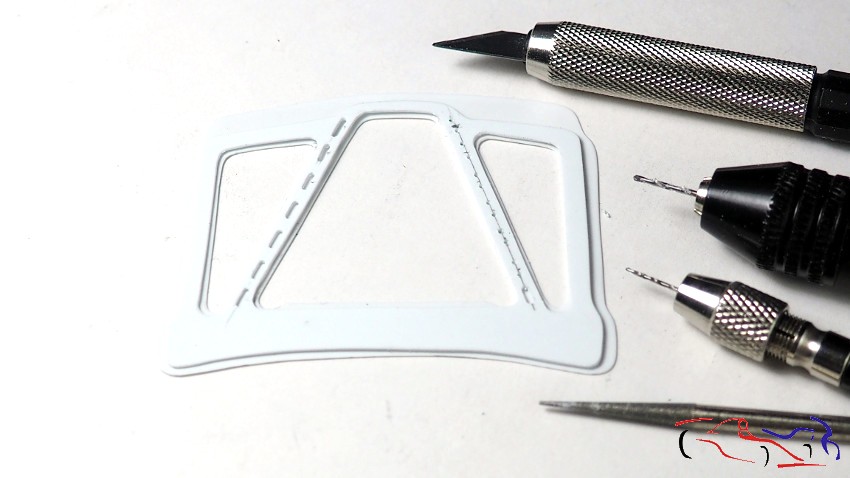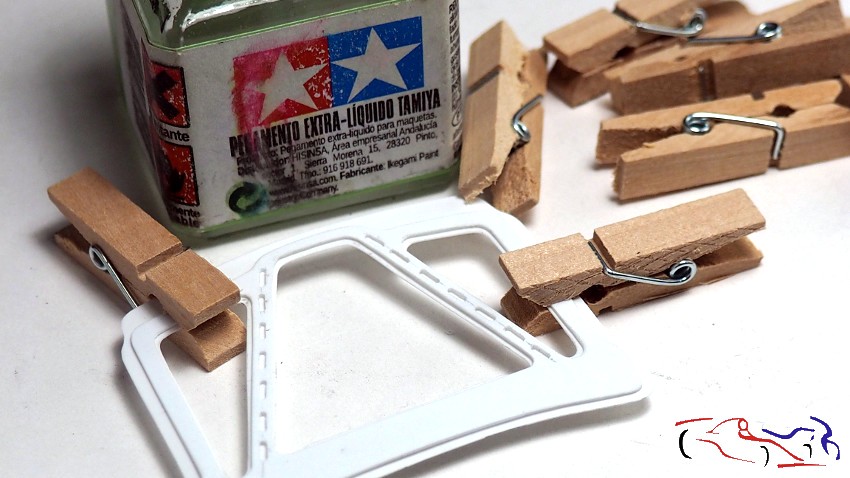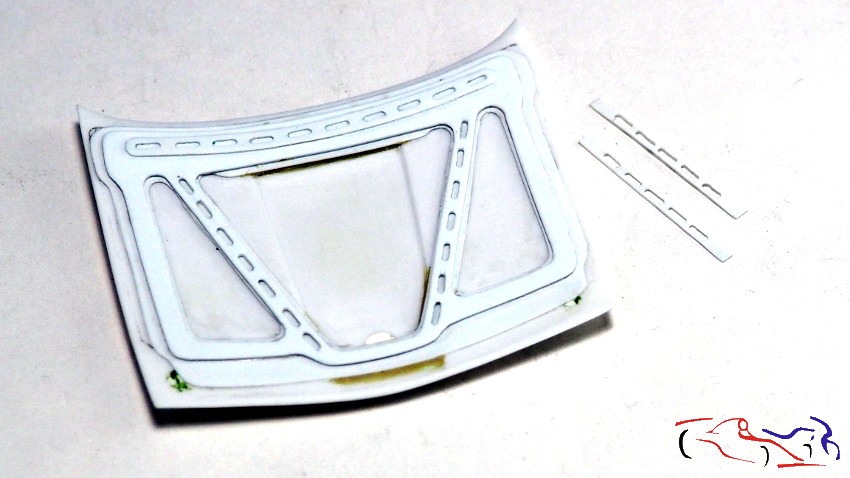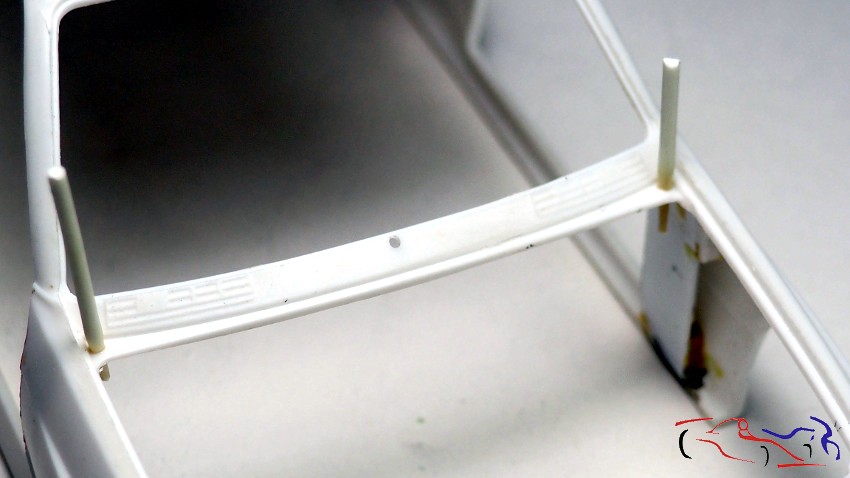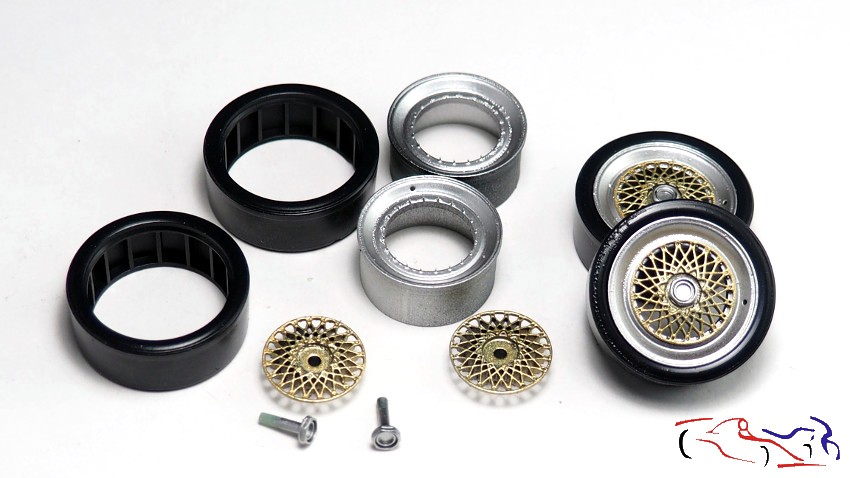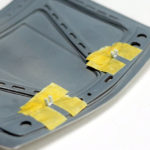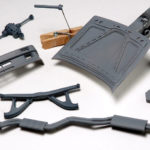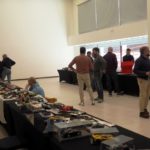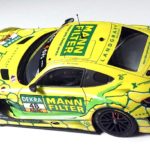Continuamos haciendo la base del coche. Estas etapas son básicas y monocromáticas, porque no hay mucho color, pero aun asi, reflejan procesos y etapas básicas para un buen detallado y acabado de la maqueta. En este post, terminamos el vano motor pegando los laterales, previo ajuste de sus partes traseras alc ortafuegos, utiliando varillas y lámimas de plástico, y masilla epoxy. Falta mostraros el resultado final, una vez lijado e imprimado:
We continue making the base of the car. These stages are basic and monochromatic, because there is not much color, but even so, they reflect basic processes and stages for a good detailing and finishing of the model. In this post, we finish the engine compartment by gluing the sides, after adjusting the rear parts to the firewall, using rods and plastic sheets, and epoxy putty. We still need to show you the final result, once sanded and primed:
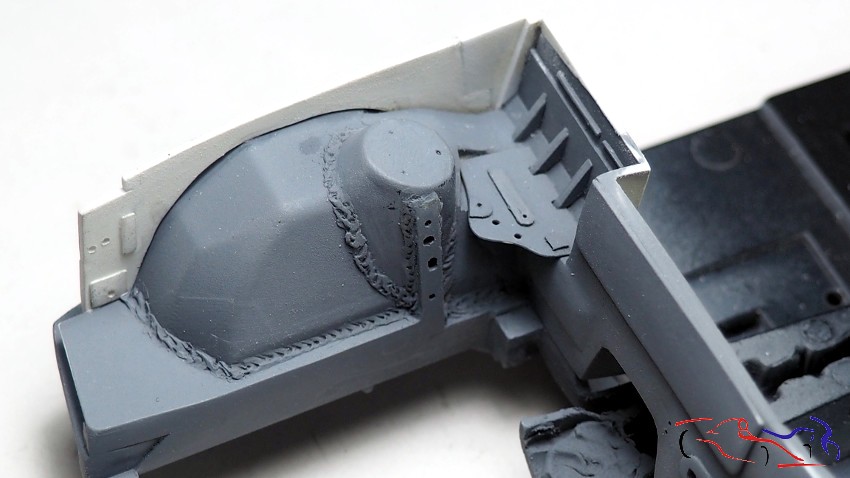
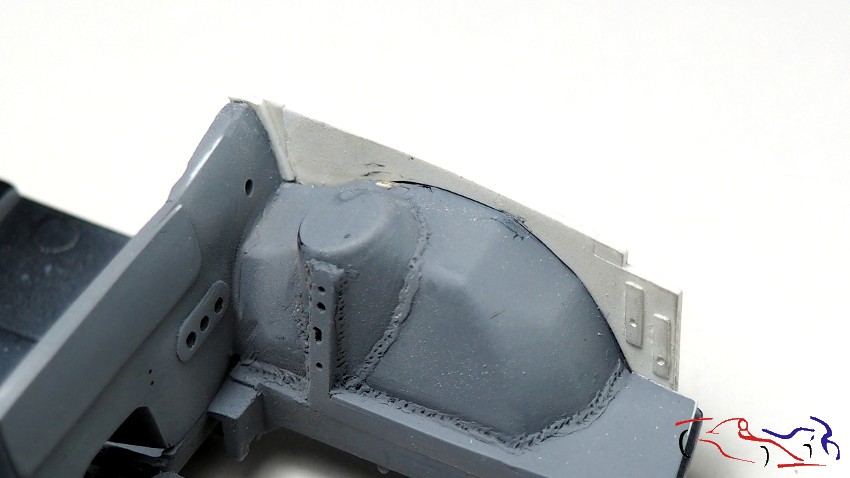
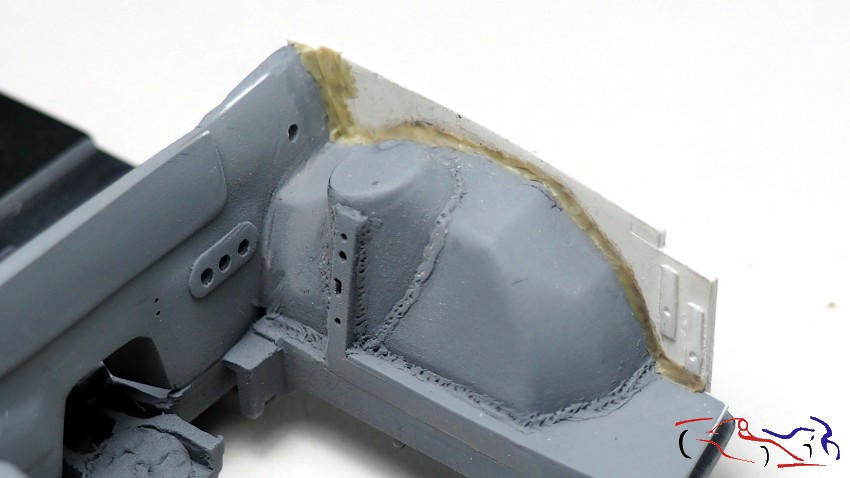
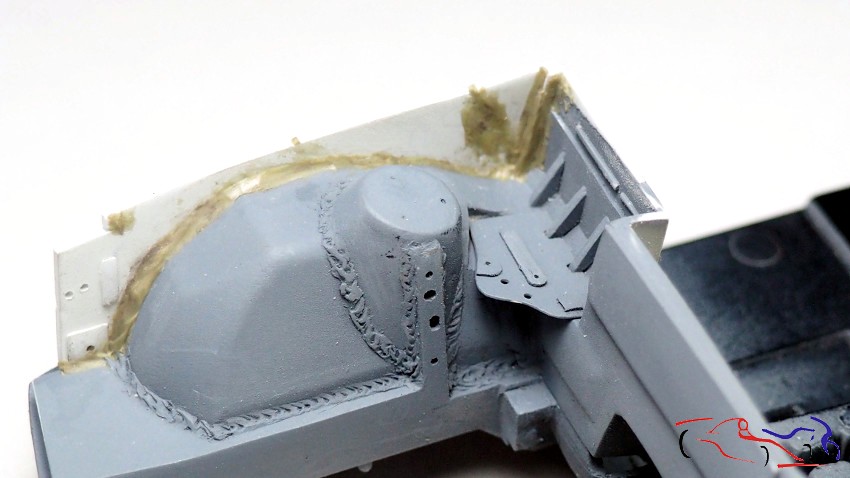
El siguiente paso será el detallado del armazón de la parte baja del capó. Ya cortamos las dos placas y ahora le creamos las aberturas en las dos oblicuas. Primero pintamos, marcamos con lápiz y con el punzón, para pasar a agujerear esas marcas. una vez realizadas, cortamos con el cutter, el plástico que hay entrelas aberturas para hacerlas más largas. Se perfilan con una micro punzón debastador.
The next step is to detail the frame of the lower part of the hood. We have already cut the two plates and now we create the openings in the two oblique ones. First we paint, mark with a pencil and with the punch, to move on to punching holes in these marks. Once done, we cut with the cutter, the plastic between the openings to make them longer. They are outlined with a micro roughing punch.
Ahora es tiempo de pegarlas entre ambas, habiendo lijado y verificado ambas piezas las veces necesarias. Las pegamos con pegamento fijándolas con las pinzas pequeñas de colgar la ropa, tamaño mini:
Now it is time to glue them together, having sanded and checked both pieces as many times as necessary. We glue them together with glue, securing them with the small clothes pins, mini size:
Lo siguiente fue crear las piezas laterales y la trasera, ya en trozos separados, con el mismo método.
The next step was to create the side and back pieces, already in separate pieces, using the same method.
Ahora es el turno de la parte delantera, que lleva otra pieza, agujereada, sobre la que irán las bisagras. Primero pintamos el contorno sobre cinta de enmascarar, cortamos, ajustamos y pegamos. En la última vemos como queda desde debajo en la carrocería:
Now it’s the turn of the front part, which has another piece, with holes, on which the hinges will go. First we paint the outline on masking tape, cut, adjust and glue. In the last one we see how it looks from below on the body:
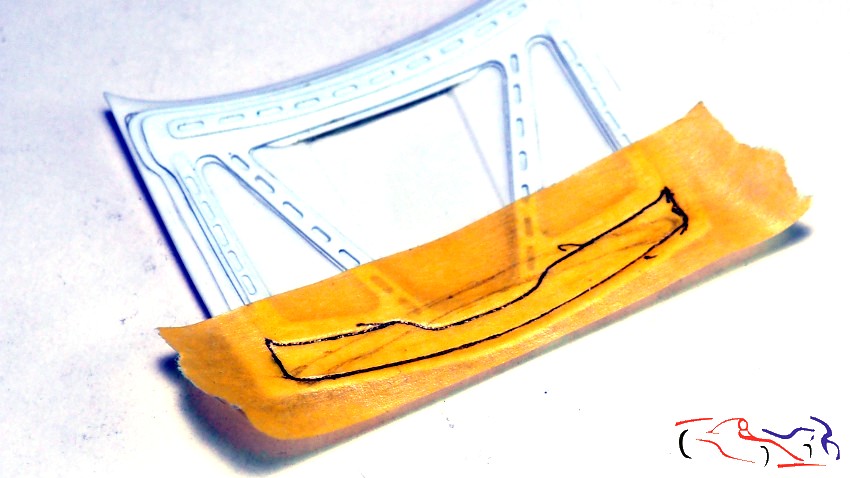
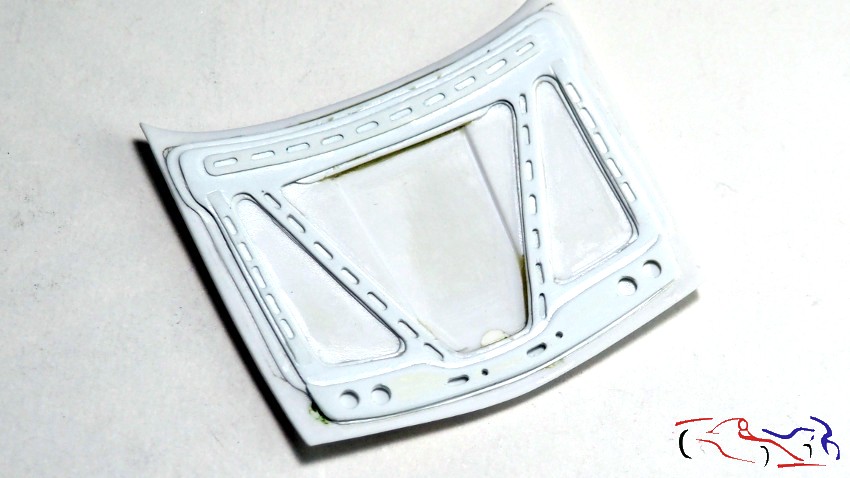
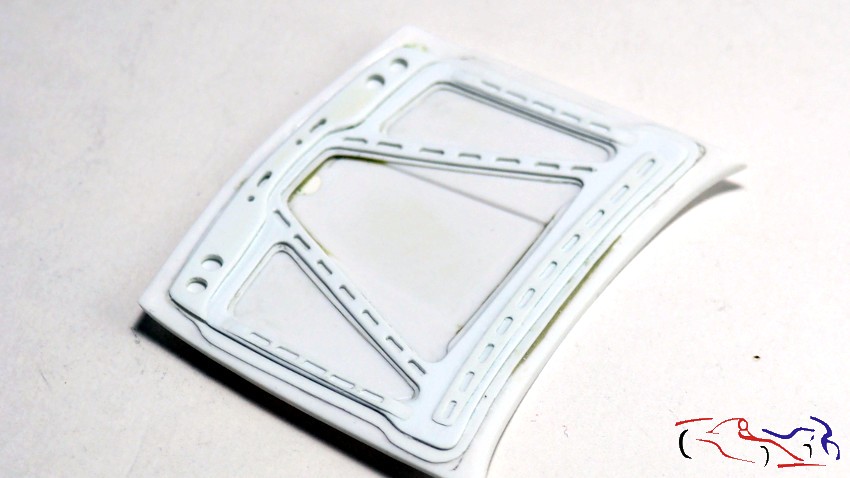
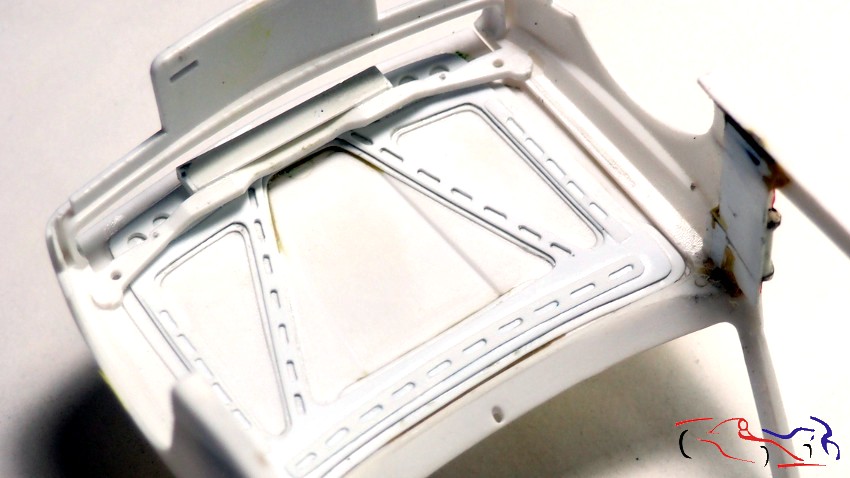
Otro paso necesario es hacer la bisagras del capó. En un principio, pensé en hacerlas con sobras de piezas de resina, tallándolas con la fresadora, pero al final, a la hora de hacer los taladros, la resina es un poco endeble, y hay mucho trabajo y tiempo para preparar la pieza:
Another necessary step is making the hood hinges. At first, I thought of making them from leftover resin pieces, carving them out with the router, but in the end, when it came to drilling the holes, the resin is a bit flimsy, and there is a lot of work and time to prepare the piece:
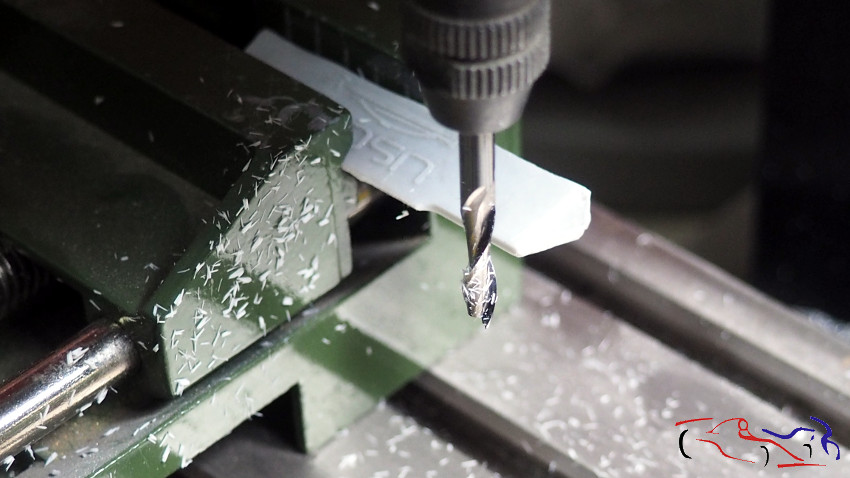
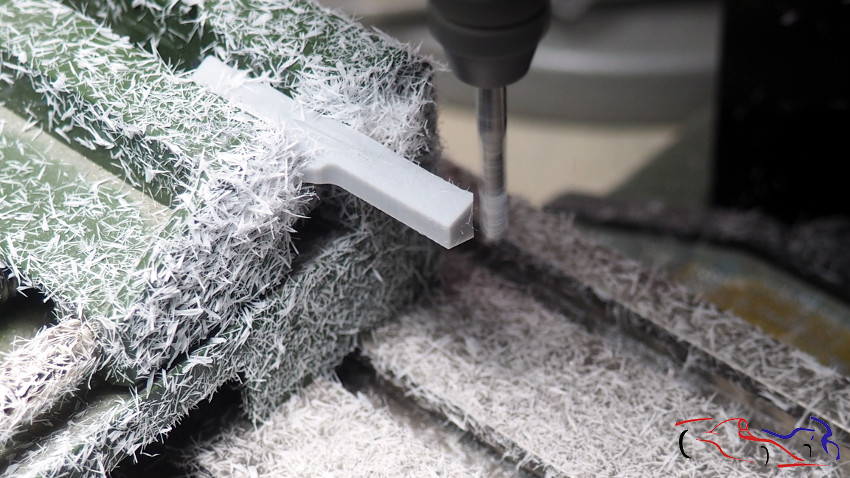
ENtonces, lo siguiente fue hacerla de plástico: más fácil, manejable y rápido, por lo que hacer una segunda pieza, es más viable. Las muestras que hice os las muestro aquí. Esas piezas verticales, que en la segunda foto está horizontales, tienen un agujero por su parte baja por el que va metido una varilla de cobre que atraviesa el tuvo horizontal, de tal manera, que esté irá fijo y la varilla tendrá movimiento. Falta todavía pensar en ello, y probar a ver si puedo hacerlas con varilla de aluminio.
So, the next step was to make it out of plastic: it was easier, easier to handle and faster, so making a second piece is more viable. I show you the samples I made here. These vertical pieces, which are horizontal in the second photo, have a hole in their lower part through which a copper rod is inserted that goes through the horizontal tube, in such a way that it will be fixed and the rod will move. I still need to think about it, and try to see if I can make them with an aluminum rod.
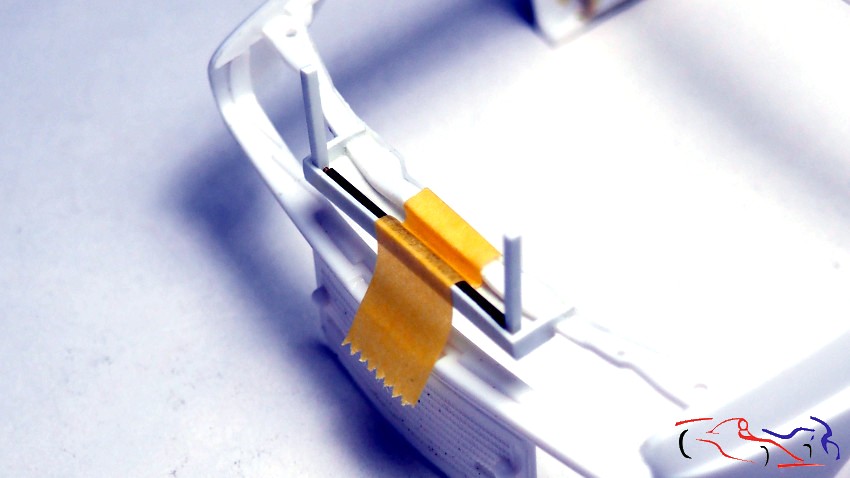
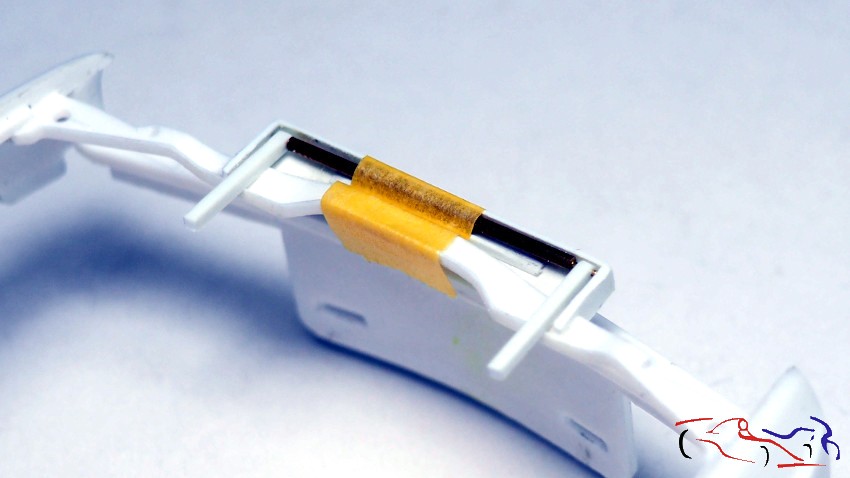
Lo último que añado referente a la parte delantera es la forma de tapar los agujeros por donde el capó se colocaba en la carrocería origunalmente. Ahora ya no hacen falta.
The last thing I would like to add regarding the front is the way to cover the holes where the hood was originally placed on the body. Now they are no longer necessary.
PAsamos a las ruedas de KMP, que constan de neumático, llanta, nucleo y tornillo. Es un buen despiece para poder pintarlas bien, siendo su acabado el correspondiente e KMP:
We move on to the KMP wheels, which consist of a tire, rim, core and screw. It is a good breakdown to be able to paint them properly, with the corresponding KMP finish:
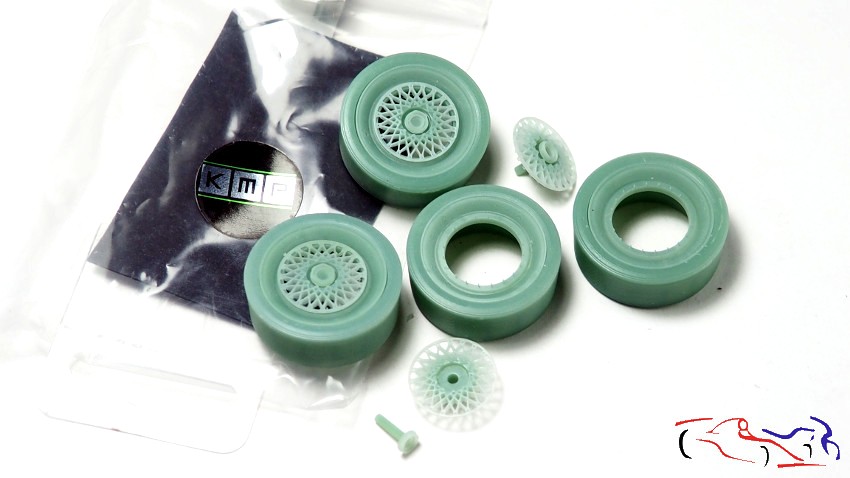
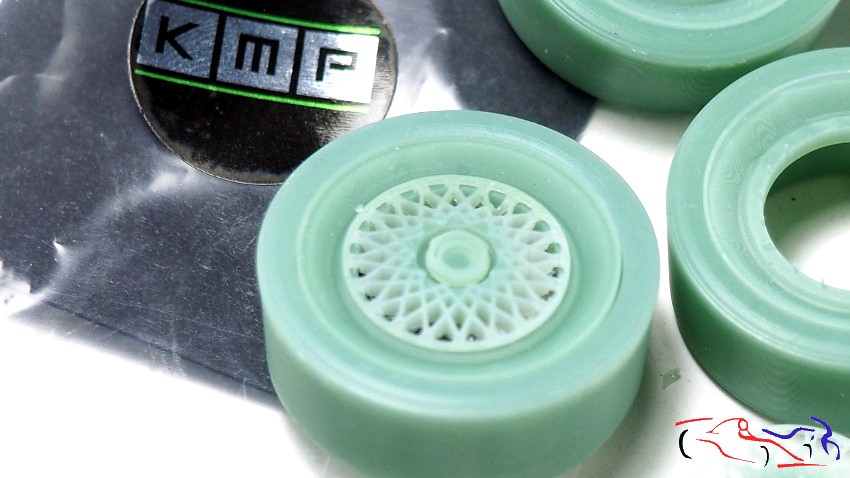
Y las imprimamos con negro brillo de Ammo-MIG, bastante bueno por el brillo que da aunque su tiempo de secado es largo, ya que hasta el dia siguiente, no se podian tocar!!
And we primed them with Ammo-MIG gloss black, which is quite good for the shine it gives, although its drying time is long, since until the next day, they could not be touched!!
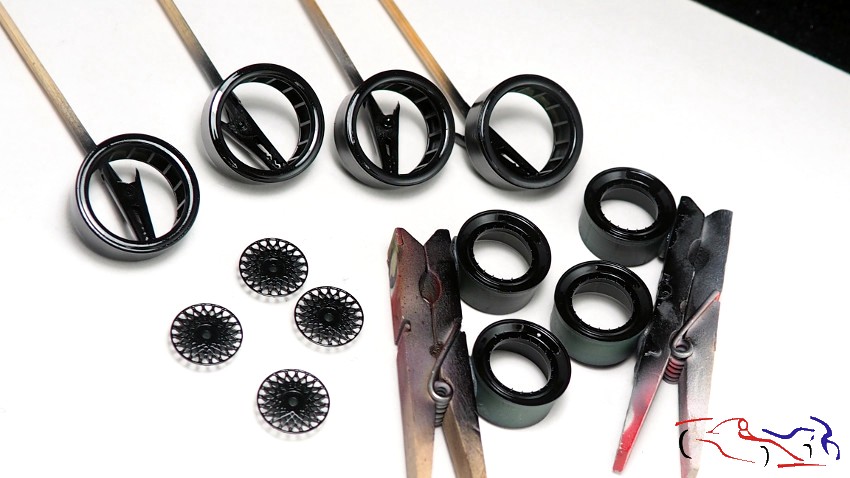
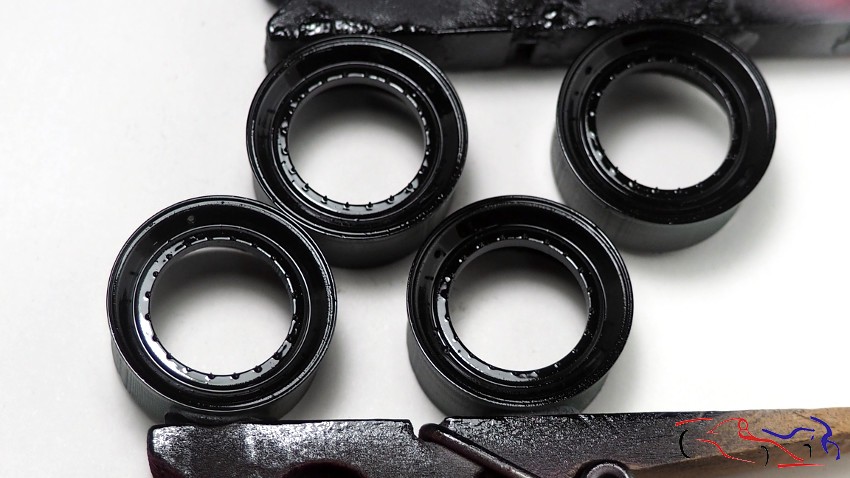
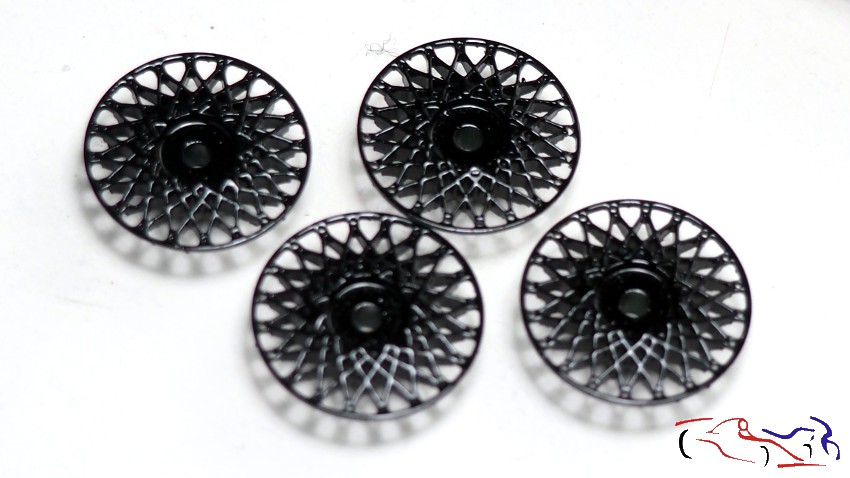
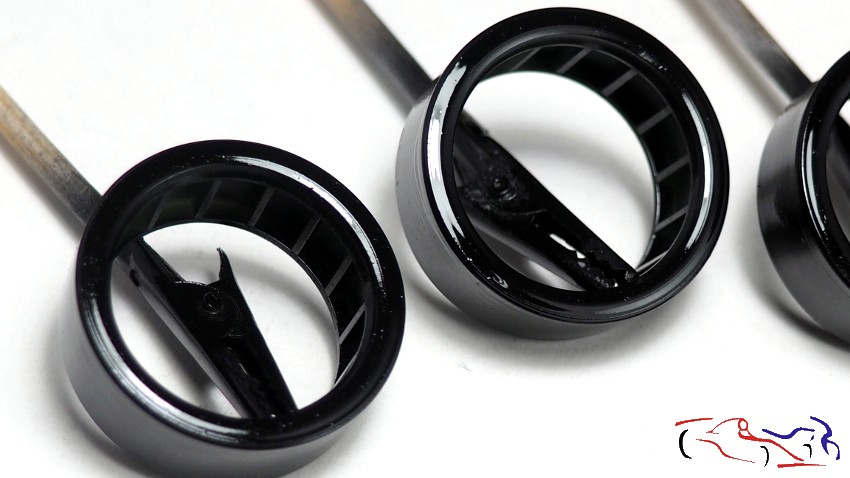
Y después de la imprimación, es el turno de pintar: neumático con negro rubber de Zero, las llantas con aluminio de Zero, los tornillos con acero de N5 y el núcleo con dorado BBS de Gravity:
And after the primer, it’s time to paint: tire with Zero rubber black, the rims with Zero aluminum, the screws with N5 steel and the core with Gravity BBS gold:
Y por último, un poco de trabajo sobre los bajos del chasis. Primero eliminamos con la dremmel un extintor y un radiador que hay en cada lado delante del eje trasero, tal y como se ve en la primera imagen. Después, tomamos medidas y creamos los depósitos con lámina de plástico, haciendo la forma aproximada a la que le ponemos tiras en la parte de abajo para darle volumen. Ésta slas pegamos dejando margen para poder lijar sin miedo posteriormente. De esta manera, no hace falta ser muy exacto en los cortes. En la segunda imagen vemos una terminada y la otra por lijar, y en la tercera, las pongo en el chasis para ver como encaja. Decir, que el depósito de la derecha, debe ir más bajo para que no entorpezca el tubo de escape:
And finally, a bit of work on the underside of the chassis. First we remove with the dremmel a fire extinguisher and a radiator that are on each side in front of the rear axle, as seen in the first image. Then, we take measurements and create the tanks with plastic sheet, making the approximate shape to which we put strips on the bottom to give it volume. We stick these on leaving room to be able to sand without fear later. In this way, it is not necessary to be very exact in the cuts. In the second image we see one finished and the other to be sanded, and in the third, I put them on the chassis to see how it fits. To say that the tank on the right must be lower so that it does not obstruct the exhaust pipe:
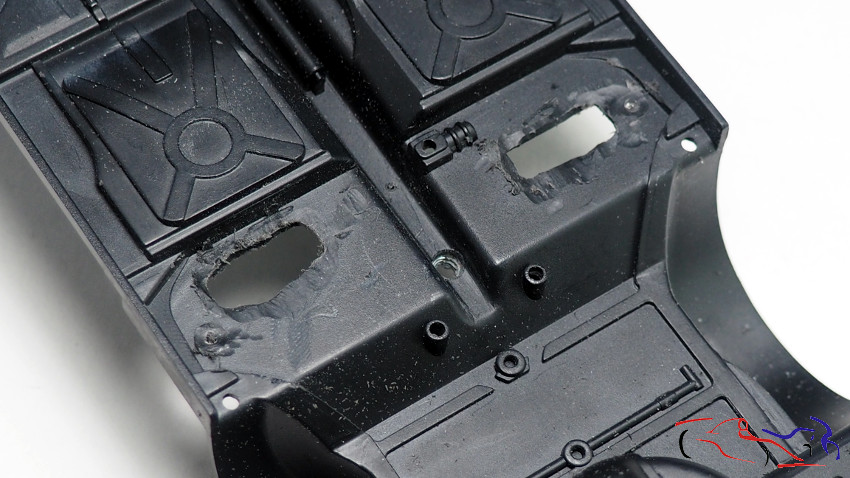
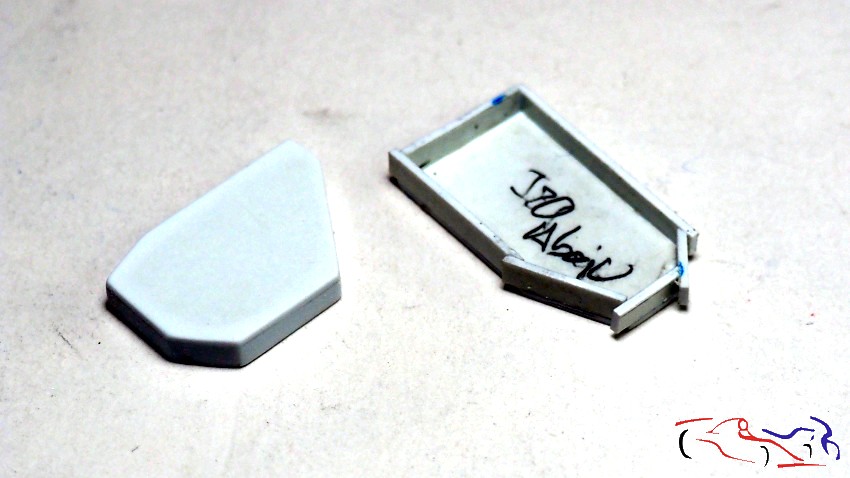
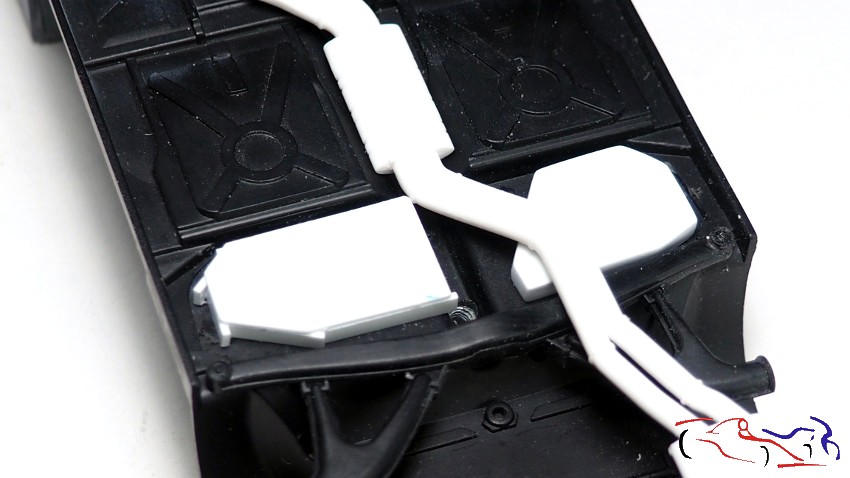
Y pronto, pondré más actualizaciones. Gracias por ver y comentar!!
And soon, I will post more updates. Thanks for watching and commenting!!

